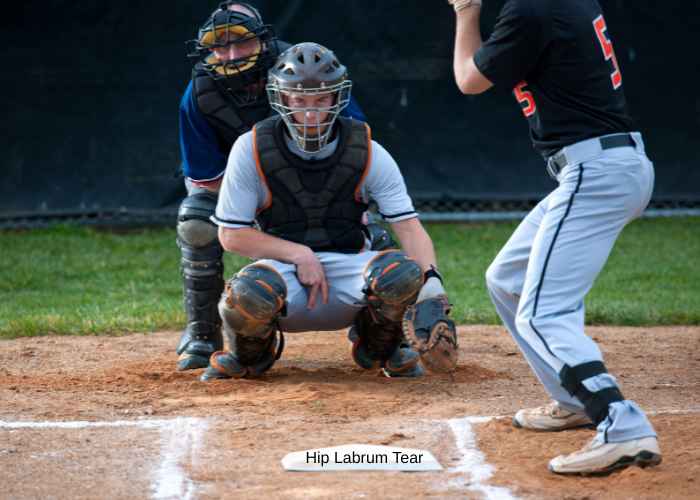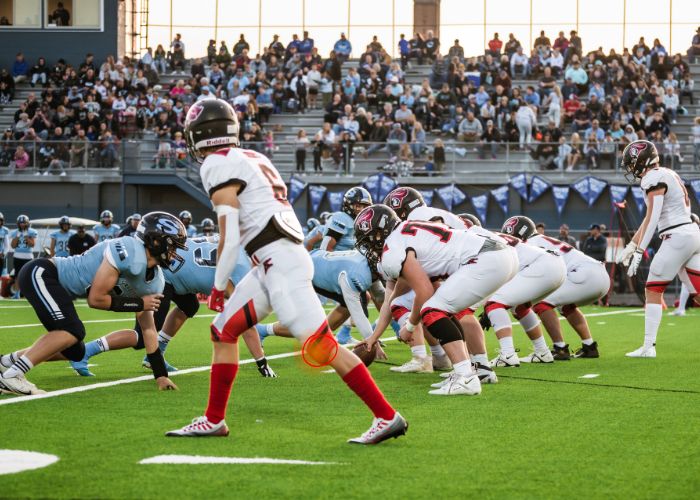Osteochondroplasty, Femoroplasty, Acetabuloplasty Surgeon

Are you an athlete who participates in sports activities requiring repetitive motion of the hip like ballet, football, basketball or soccer? If so, you may be at risk of Femoroacetabular impingement, otherwise known as FAI. FAI is a condition marked by abnormal contact between the hip bones causing impingement and pain. Hip surgeon and FAI treatment specialist, Doctor Ronak Mukesh Patel, provides diagnosis as well as surgical and nonsurgical treatment options for patients in Houston, Sugar Land, and Pearland, TX who are experiencing symptoms and pain caused by FAI. Contact Dr. Patel’s team today!
What type of osteochrondroplasty surgeries correct hip impingement?
When a patient’s hip joint has altered morphology and shapes, it can cause friction between the femoral head/neck and the acetabulum (hip socket). When nonoperative treatments fail, hip impingement surgery may be recommended:
- Osteochondroplasty is performed to reshape the femoral head/neck (femoroplasty) and/or the acetabulum (acetabuloplasty) to correct the impingement.
- Femoroplasty, also called “CAM takedown”, is performed to reshape the femoral head/neck when extra bone is causing fraying or tearing of articular cartilage.
- Acetabuloplasty, also known as “pincer takedown”, is performed to reshape the acetabulum (socket) when it is overhanging with too deep of a hip socket and pinches the labrum and cartilage.
Dr. Ronak Mukesh Patel, orthopedic hip doctor, treats patients in Sugar Land, Pearland, and the Houston, Texas area, who require hip impingement surgery
What are the types of femoroacetabular hip impingement?
There are three specific types of femoroacetabular impingement (FAI):
- Cam impingement (also known as pistol grip deformity) is characterized by a misshapen or aspherical (non-circular) femoral head.
- Pincer impingement is defined by additional bone extending past the standard rim of the acetabulum (hip socket) leading to a deep hip socket.
- Combined impingement occurs when both cam and pincer impingement are present.
A misshapen femoral head or bony overgrowths (bone spurs) along the femoral neck (CAM impingement) and/or additional bone growth extending the hip socket (pincer impingement) can damage the articular cartilage and/or hip labrum over time due to excessive grinding. When this happens, the articular cartilage and labrum that should provide a smooth gliding surface for the ball and socket in the hip can become frayed or torn leading to pain with movement and overall limitations in hip joint function. This process has been associated with hip osteoarthritis.

When is osteochrondroplasty recommended to treat hip impingement?
Patients with hip impingement are often successful managing their symptoms with non-surgical therapies alone. This can include rest, activity modifications, non-steroidal anti-inflammatory medications (NSAIDs), physical therapy and exercises to improve hip strength and mobility, and hip injection. However, when non-surgical treatment is no longer successful in symptom management, an osteochrondroplasty and labral repair is recommended to prevent further joint damage.
How are femoroplasty and acetabuloplasty performed?
Dr. Patel prefers the arthroscopic approach for both femoroplasty and acetabuloplasty. To begin arthroscopic surgery, Dr. Patel makes two to three small “poke-hole” incisions surrounding the hip joint. A small camera (arthroscope) is introduced through a portal and the images are transmitted to a screen for Dr. Patel to methodically examine the femoral head, acetabular socket, labrum, cartilage, and surrounding soft-tissue structures. For femoroplasty, specialized surgical instruments such as a burr are inserted to remove any bony growths from the head and neck of the femur. The ball of the femur is then shaved and reshaped into a normal sphere. For acetabuloloplasty, the rim of the acetabulum is trimmed to the normal curvature. This is done methodically with the help of xray in surgery to ensure adequate correction according to the surgical plan including pre-operative xrays and CT scans. When patients have combined cam and pincer impingement conditions, both procedures are performed.
When is femoroplasty and/or acetabuloplasty with labral repair required?
This is done quite often, if not almost every case. A labral tear accompanying a cam, pincer, or combined impingement is repaired using specialized surgical anchors with small anchors and sutures. The process of impingement leads to a labral tear so this is an important repair to perform.
How long is the recovery period after osteochondroplasty surgery?
The recovery period following osteochondroplasty depends on the type of impingement experienced and the extent of the surgical repairs. Although most patients reach a full range of motion of the hip and normal walking without crutches/walker in about 6 weeks, the expected return time to normal daily activities is 2-3 months and 6 months for athletic activities. The recovery period can also be affected by carefully following the post-operative care instructions and physical therapy protocol provided by Dr. Patel. Patients in the Houston, Texas area can generally expect the following:
- Weight-bearing will be limited with the assistance of crutches for 2-4 weeks after surgery. A specialized hip brace may also be applied to protect the hip joint during this recovery period.
- The key to a successful recovery following osteochondroplasty is adhering to and completing the physical rehabilitation program designed by Dr. Patel. This physical therapy program begins immediately after surgery and focuses on improving hip strength and range of motion.








